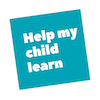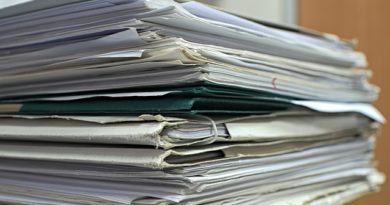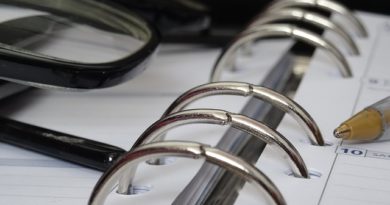Creating and Using a Learning Profile for Your Child
If you suspect that your child has a learning disability, and if your child passes our initial checklist, you’re in the right place.
Creating a learning profile is part of Journey 1: The First Steps to Help Your LD Child.
A learning profile is a short, one-page summary that tells the teacher how your child learns and succeeds, and what teaching methods and approaches work best for your child.
Unlike a personal letter, a learning profile looks like a professional tool for the teacher to use and is meant to be used year after year, as an updatable reference page. You can think of it as “teaching shortcuts for my child’s success,” and you can laminate it, to emphasize it as a tool.
In a world where we’re encouraged to use strength-based parenting and teaching approaches, a learning profile helps identify positive paths to success. You spend a significant portion of your life tracking what doesn’t work for your child, so a learning profile can be fun to create. What works?
Why are We Talking About Strengths?
The whole process for helping LD children is set up to focus on what’s “wrong” with your child. What does your child fail to do? What is difficult for the child? What does your child avoid? Although they are acting for the best, parents and teachers often focus more on problem areas than possibilities.
It’s time to break the pattern. Not only do parents and teachers need to understand children’s weaknesses but they should also have an idea about their interests and strengths.
Please take a minute to read our post talking about a new view of strengths.
It’s not appropriate for children to be kept away from fun or interesting skills simply because they haven’t developed the mechanics needed to participate. It’s necessary for children to play, to participate and socialize with other children, and to develop higher-level thinking and organizational skills.
The core definition of a “learning difference” is that it is unexpected. That means that otherwise bright children have unexpected problems engaging in structured academics, and using academic skills.
Until your child develops academic skills, your learning profile can help the teacher learn to think around skill obstacles in a way that will help your child have fun, participate fully, and achieve success.
This is a new way of thinking for many teachers and parents.
So What is a Learning Profile?
A learning profile is a short, one-page summary that tells the teacher how your child learns and succeeds, and what drives your child. Unlike other education-based reference documents, your child’s learning profile doesn’t just summarize test results and weaknesses. Whenever possible, it contains instructions and examples for how a teacher can succeed in teaching your child.
In a world where we’re encouraged to use strength-based parenting and teaching approaches, a learning profile helps identify positive paths to success.
You spend a significant portion of your life tracking what doesn’t work for your child, so a learning profile can be refreshing. What’s worked?
What Does a Learning Profile Do?
Ideally, a Learning Profile presents your child as a budding success.
Every child in the world has successes, every day. It’s too easy for parents and teachers to overlook those successes and apply arbitrary metrics. Use the learning profile to talk about your child’s strengths, interests, and learning curve. Use the learning profile to give teachers a preview of how to succeed with your child.
A Learning Profile Conveys Your Expectations
Your learning profile lets your teacher know that you have worked to identify ways in which your child can succeed. You expect that they will set up an environment in which your child can succeed as well.
See the bottom of this post for sample Learning Profiles.
Gives the Teacher Information to use Professionally, by Helping Prioritize and Shape Teaching Methods
A learning profile identifies best practices for a teacher to use with your particular child, and it conveys the information in a professional fashion.
It’s very common for young LD children to have big problems in one or more areas of input or output. Sometimes, the child has processing problems (e.g., needs more time). Many teaching methods focus on identifying weaknesses, and then strengthening them.
If a child has an LD, however, focusing on weaknesses can lead to repeated failure and frustration for both teacher and child. LD children often need outside therapy, specific training, or a higher level of maturity to learn a basic skill. Some children will never learn specific skills, and will have to just work around them as adults. Extra time spent focusing on spelling, handwriting, or math memorization skills (for example) might just be a waste, depending on the LD.
As the parent of a child with LD, you will learn to look at educational circumstances and ask questions. “What’s the point of this assignment?” If the point is to demonstrate ideas, then your child should be able to type, or make a video, or a collage, or a drawing. You’ll learn to push back.
This shift—away from focusing so much on the remedial (handwriting, spelling, and grammar) that the lesson gets lost, to changing a lesson so that a child can learn what he is able to learn at this time, can be difficult. It’s not how schools usually teach, and some teachers have never tried to teach in this way. A learning profile can help make this shift happen.
One very experienced mom of a boy who had diagnosed, severe dysgraphia, Shannon**, finally wrote a note to her son’s teacher, saying “Please do not try to FIX him. Your time, and his are much better served if you let ME be the one to worry about his long-term ability to write, and you worry about how to help him get his ideas and answers out of his head without writing or typing. It is a problem that has been addressed in multiple ways for many years and you can rest assured that we, his parents will continue to work on it. You just worry about fifth grade.”
This letter might not be appreciated by many teachers, but it contains a message for how to effectively teach Shannon’s son. This information would be great in a learning profile.
Offers a Different Take on the Situation
It’s simple, especially when you’re a teacher with 30 kids in your classroom and multiple special needs children, to simply aim for the goals. Use this opportunity to offer a different set of success metrics. (e.g. We’re working on handwriting. In the meantime, can you please help him develop his comprehension, sequencing, and narrative skills? Instead of writing a paragraph, have him draw a picture of what he means and you can translate it when he gets home. Or he can put his ideas into comic book form.)
Includes Simple Accommodations
We offer a whole collection of accommodations. Include a link to accommodation resources in your Learning Profile, and also list the top accommodations that are best for your child.
The Do’s
- Make it short and sweet
- Speak of successes
- Give examples, and cite other teachers.
- Keep it performance-based, although it’s appropriate to call out issues with depression or anxiety.
- Focus on how SHE can have success teaching your child
The Don’ts
- Don’t be emotional
- Not too many words
- Don’t complain about other teachers or situations
Writing a Learning Profile
A learning profile typically contains information about:
- Who is your child? What are his interests, and what motivates him?
- What is my child’s primary interest?
- What is my child’s biggest learning strength? Has he surprised you with his knowledge in any particular field?
- Has she been diagnosed with any LD? Do you suspect any others?
- What are her biggest challenges in the classroom? (Including things like anxiety.) And what helps with them?
- Input that works best (visual, auditory, kinesthetic) for receiving and learning information.
- Output that works best for your child (writing, speaking, artwork), for measuring learning.
- In what classroom circumstances does your child work best? (with a partner, alone, front of room)
Ways to Describe Your Child
The purpose of a learning profile is to describe your child in a way that helps them get taught. One way to do this is to help teachers see dimensions of your child in positive, rather than negative ways. Here are some ways to describe your child using positive terms:
| Instead of this negative term: | Describe your child like this: |
| Can’t read | Problems with reading skills. Excellent comprehension of verbal stories, and memory for stories and actions. |
| Poor handwriting | Difficulty with handwriting skills. Good at outlining ideas with pictures, and then dictating stories and sentences. Output is far better when dictated than when written. |
| Unfocused | Multitasks, pays attention to many things at once, active interest level |
| hyperactive | Energetic, thinks better when moving or right after moving, including actions can help with focus |
| Oppositional | Strong critical thinker, logic-based, often has a different perspective, wants to be heard |
| Stubborn | Persistent, determined, sets goals and works toward them |
| Talkative | Loves to communicate, enjoys reaching out |
| Fussy | Sensory-based sensitivities around [name: e.g. sound, light, seating) |
| Wants attention | Responds well to attention. Seeks positive feedback. |
| Socially Challenged | Shy, Intimidated by social situations. Responds better when given social structure. If anxious, give them a job. |
In addition, the profile should talk about tips for getting a child to succeed (e.g. if my son feels awkward, give him a job), and list some things that the child loves, so that the teacher will have an easy time connecting with him.
Alternate Techniques for Learning
Here are some ways to describe alternate techniques for demonstrating learning.
| To measure this ability: | These alternate techniques worked to show learning: |
| Reading comprehension | Can explain verbally, use a scribe, do a drawing or a fill in a mind map. Show in a flowchart or make a video. |
| Memorizing lists | Can explain why the lists are necessary, color a simple diagram showing why the list matters, and can refer to a color-coded list. |
| Writing essays | Can draw or diagram the essay. Can dictate the essay. Can learn and show main sentence and supporting arguments in a picture. Can tell the essay verbally. Can describe elements of the essay separately: main characters, plotline. Can create a comic. |
| Spelling | Especially if your child has dyslexia, and is getting phonological tutoring. Can say that it’s best to work on identifying phonics in a word. Can work on spelling same type of phonics. Look at Orton-Gillingham spelling. |
| Memorizing sequenced information (e.g. math) | Can draw their own multiplication table. When given a printed list of numbers, can go through and circle, to practice skip-counting (e.g. find the two’s times table). Can learn a song with gestures for simple memorization. Can work on number sense. |
| Working with maps | Instead of simply memorizing names, can color and draw a story on a map. |
| Word Seek | This child should never be given any of the “game” homework such as word seek games. Instead, have the child select three or four words and draw a story. The child can then tell or write about the story. |
You can encourage your child to develop their own separate learning profile. Read this description of how the George Street Normal School in New Zealand requires children to develop a strength every year. Your child can draw a picture, and list goals and worries for the year. They can also mention what worked best last year. And they can include a drawing of a loved pet or accomplishment.
At the end of every year, you can ask this year’s teacher to write up the three most effective things they did to teach your child. This is a way of passing child-specific wisdom on to the next teacher, and a great idea if you have a unique learner.
Be a Detective: Researching a Learning Profile
If you have a professional test your child, or you apply for an IEP through the school district, you’ll be able to gather information through the testing process. You can also use the #BigChecklist to identify problem areas, and use the Whole Child testing method to identify problems not measured with psych-ed testing. You will naturally gather information about what works every night as you try various methods on homework. And you already know many things about how your child learns, what they need for success, and what techniques help them succeed.
The type of professional who can help you create a learning profile is called an educational consultant. An educational consultant helps you to look through the results of your child’s psycho-educational evaluations and translate them into action.
Dan Leibowitz, M.Ed., MS. Sped., CET, is the owner of Innovative Learning Services in Kentfield, California. He emphasizes that you should start by “requesting a thorough and clear debrief, either with the professional who did the testing or someone who is skilled at interpreting and communicating about it.” The next step, says Dan, is to “get help transforming the data and abstract terminology into a manageable, concrete plan of action with measurable goals that everyone, including the student, agrees upon – for both the school and home environments.” You don’t have to wait for an IEP meeting to begin establishing a plan.
Dan also emphasizes that often, children, even older children, have no idea how to be successful with their particular learning needs, and they often forget. A learning profile can remind parents, children, and teachers about what works best.
You can use Pinterest to look for teaching methods to suggest. Here’s a sample of math number sense teaching pages.
Sample Learning Profiles
Here’s a Sample Learning Profile from the book Teaching Every Student in the Digital Age. It is meant for an entire class of students. This learning profile calls out strengths, weaknesses, and preferences/interests.
Then it calls out recognition (what the teacher should know about teaching), strategy (how the teacher should teach, for both strengths ad weaknesses), and affect (what’s the personality type of each child and how does it affect their strength and weakness.
Preferences, Needs, and Personal Learning Backpack
Kathleen McClaskey, founder of Make Learning Personal, describes a sample “Learner Profile” on her website.
This is a learning profile used by a King school district.
**Shannon Pedigo Efteland quotation, with permission, from Dysgraphia Facebook forum, August, 2016










Pingback: Does My Child Have Learning Problems? Quick Screener for Learning Disabilities - Help My Child Learn
Pingback: Does Your Child Have a Learning Disability? A Quick Screener. - Help My Child Learn
Pingback: Pathway Through the Educational System - Help My Child Learn
Pingback: Journey 1: Identify Your Child's LD Challenges - Help My Child Learn